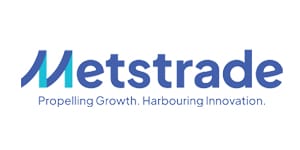Accident report into Red Funnel grounding and sinking of yacht released

The Marine Accident Investigation Branch (MAIB) has released its report into the collision between ro-ro passenger ferry, Red Falcon, and moored yacht, Greylag.
In severely reduced visibility in Cowes Harbour (Oct 2018), the collision occurred when the master of the ro-ro passenger ferry, Red Falcon, lost orientation as his vessel swung out of control. The ferry departed the navigable channel and was spun around through 220°. In his confusion, the master drove the ferry in the wrong direction resulting in a collision with the moored yacht, Greylag, which was sunk on its mooring as a result.
According to the Island Echo, the Red Falcon’s crew were struggling to maintain the required course resulting in the master taking over the controls from the Chief Officer. The vessel was swinging from starboard to port, and by 08:10 had swung 220 degrees from its original heading.
 It was at this point the decision was made to abort the berthing and head back out of Cowes Harbour and the power was increased – but in the wrong direction. Just a minute later, the car ferry crashed into Greylag at a speed of 6.5 knots, causing it to go under the water and immediately sink. The engines were pulled back but the ferry continued towards East Cowes Esplanade, running aground in soft mud.
It was at this point the decision was made to abort the berthing and head back out of Cowes Harbour and the power was increased – but in the wrong direction. Just a minute later, the car ferry crashed into Greylag at a speed of 6.5 knots, causing it to go under the water and immediately sink. The engines were pulled back but the ferry continued towards East Cowes Esplanade, running aground in soft mud.
The 4,128 ton ferry – with 48 people on board – then ran aground just 130 metres off East Cowes esplanade – close enough to the shore that locals could connect to the onboard WiFi, according to the Island Echo. This all happened in between 50-200 m of visibility.
MAIB has identified the following safety issues:
- the master became fixated upon the information displayed on his electronic chart and operating engine controls, ignored information displayed on other electronic equipment, and became cognitively overloaded due to high stress
- the bridge team became disengaged from the operation due to a lack of clear communications and emergency scenario training
- the hazard to people sleeping on yachts in Cowes Harbour had not been sufficiently mitigated within risk assessments
According to the Island Echo, it has been confirmed that the helmsman and lookouts on board Red Falcon at the time of this crash were also onboard the ferry when it crashed into the motor cruiser Phoenix on 29th September 2018. Furthermore, the Chief Officer (C/O), helmsman and lookouts on board Red Falcon during the Greylag collision were also onboard Red Eagle at the time of another accident in the fog on 27th September 2018. The C/O returned to work just two weeks before the Greylag collision and had little experience of working with the master, who was acting in a temporary role.
“Our investigation highlighted how quickly restricted visibility can negatively affect individuals’ awareness and orientation, which increases their stress and impacts on decision making,” says the Chief Inspector of Marine Accidents. “Crews on vessels of any size can be affected, but the consequences can be mitigated by prior preparation and training, effective teamwork, and a full understanding of the capabilities and limitations of the available instrumentation.
“It was very fortunate that nobody was on board yacht Greylag when it was struck and overrun by Red Falcon. In this respect, the family on a yacht on a nearby swinging mooring had a lucky escape. When Red Falcon swung around it narrowly missed Cowes Yacht Haven marina wall, and had yachts been rafted there, the consequences of this accident could also have been much more severe. Our investigation has highlighted that commercial vessels can pose a danger to people sleeping on yachts in some areas of Cowes Harbour, and recommendations have been made to Cowes Harbour Commissioners and Cowes Yacht Haven to review their risk assessments.”
MAIB has recommended that Red Funnel conduct regular assessment of ship-handling capabilities including pilotage by instruments alone, and reviews the shipboard method of determining orientation displayed on the ship’s electronic charting system.
The Cowes Harbour Commission and the Cowes Yacht Haven have been recommended to review their risk assessments for collision between a commercial vessel and rafts of yachts moored at their marinas detailing mitigating measures that are within their control to implement.











